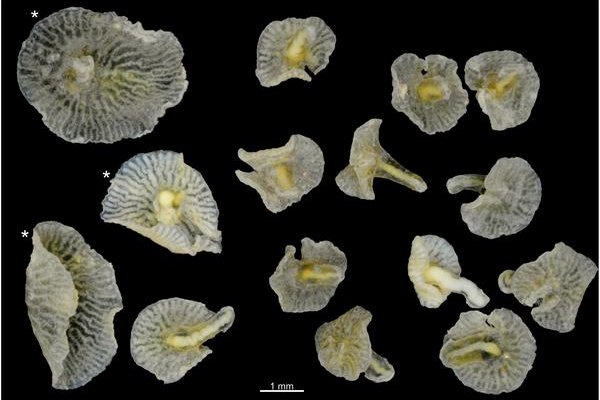Dendrogramma enigmatica and Dendrogramma discoides have so far proven unclassifiable. (Just J, Kristensen RM, Olesen J/PLoS ONE)
SYDNEY, Sept. 3 (UPI) -- The animal kingdom may have to sprout a new subdivision to accommodate a strange deep sea creature that resembles a cross between a jellyfish and a mushroom.
The strange animals were discovered in 1986 off the coast of Australia, but scientists are only just now getting around to giving them names -- Dendrogramma enigmatica and Dendrogramma discoides.
And while they can give them names, they can't give them a proper home on the family tree, as these enigmatic creatures defy classification. Researchers say they're most similar to soft-bodied organisms that floated about the ocean during the Ediacaran period, between 635 and 540 million years ago. The two puzzling species are described for the first time in the latest issue of the journal PLOS ONE.
"It's a very interesting surprise, and it poses lots and lots of questions," Simon Conway Morris, a biologist at the University of Cambridge in England, told National Geographic.
Scientists have long debated whether the base of the family tree needed some rearranging -- some additional roots to account for the types of animals researchers think the sea mushroom might be most closely related to. Experts in early animal evolution have largely dismissed these early creatures as failed experiments in multicellular life. But if it turns out these new creatures -- which when alive look almost identical to translucent chanterelle mushrooms -- some rearranging may, indeed, be in order.
In addition to resembling simple Ediacaran organisms, their features loosely resemble cnidarians, a phylum that includes jellyfish, corals, and sea anemones. But loose resemblance is as close as it gets, as both Dendrogramma enigmatica and Dendrogramma discoides differ in many important ways.
"It's still amazing that no one has come back and said at least, 'I've seen things like this,' even if they haven't published it," said biologist Jean Just, who first discovered the creatures in 1986 in a sample of Australian seabed, but who has since retired from the Natural History Museum of Denmark. "That's exciting," he said of the fact that his discovery is still making waves.
"Finding something like this is extremely rare, it's maybe only happened about four times in the last 100 years," co-author Jorgen Olesen, a researcher at the University of Copenhagen, told BBC News. "We think it belongs in the animal kingdom somewhere; the question is where."















